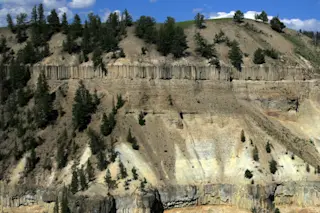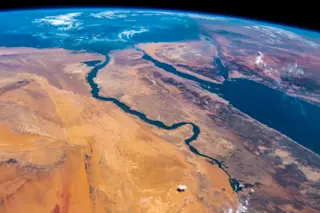Basaltic lava flows (columns) in-between rhyolitic ash deposits at Yellowstone Caldera. Brocken Inaglory | CC BY-SA 3.0Eruptions readers have lots of great questions about volcanoes and this summer, I want to tackle some of them. So, for the rest of the summer while I'm in and out of the office, I'll be trying to answer one reader question per week (along with trying to keep up with the usual volcanic news goodies). If you want to submit a question, you can send it to me (eruptionsblog at gmail), tweet it to me (@eruptionsblog) with the hashtag #summerofvolcanoes (or just #sofv) or leave it as a comment below. This week's question is great and gives you a send of the types of questions I'm seeking. Hopefully you'll enjoy this more in-depth looks into volcanoes and magma.
Summer of Volcanoes #1Submitted by Lockwood DeWitt: How does bimodal volcanism work? Bimodal volcanism is ...














